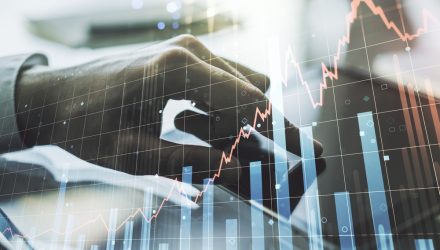The real estate sector is a compelling frontier for implementation of environmental, social, and governance (ESG) principles, but many traditional exchange traded funds are slow-moving on this front.
That makes the Invesco MSCI Green Building ETF (GBLD) all the more relevant for investors seeking the combination of ESG and real estate. GBLD, which debuted last April, follows the MSCI Global Green Building Index.
GBLD is a relevant consideration today for real estate investors because more and more commercial real estate firms are waking up to the advantages of bringing green concepts and strategies to real estate.
“In recent years, real estate has debated the ‘green premium,’ where sustainability-focused companies pay a higher price to rent or buy buildings with certified sustainability credentials that sit well with their values. There’s been much research on how to quantify this green premium — and many discussions on whether it’s really worth the effort for landlords and developers,” writes JLL global chief executive officer and president Christian Ulbrich.
GBLD fits in with those objectives because the fund’s 83 holdings “include the design, construction, redevelopment, retrofitting, or acquisition of green-certified properties to promote mechanisms for raising capacity for effective climate change mitigation and adaptation,” according to Invesco.
There’s longer-ranging good news for the GBLD investment thesis. As Ulbrich points out, a recent JLL survey indicates that nearly two-thirds of those polled believe that green applications in commercial real estate not only add value, but can make it easier to attract and retain tenants while perhaps commanding higher rents.
Interestingly, the concept of green buildings isn’t solely centered around increasing the value of a commercial property. Rather, it’s about ESG and environmental stewardship becoming more important priorities at the corporate level.
“Increasingly, conversations about commercial real estate are peppered with the term ‘brown discount.’ Basically, buildings that fail to live up to higher environmental standards will be seen as less valuable. We’re only just seeing signs of it in the market, but the size and scale of brown discounts will rise rapidly in coming years,” adds Ulbrich.
Obviously, developers want to avoid the brown discount, underscoring the viability of GBLD as a long-term idea for investors seeking real estate exposure. Additionally, the idea of green buildings isn’t confined to the U.S. It’s a global phenomenon. Ten countries are represented in GBLD, and the U.S. accounts for less than a third of the ETF’s geographic exposure.
For more news, information, and strategy, visit the ETF Education Channel.
The opinions and forecasts expressed herein are solely those of Tom Lydon, and may not actually come to pass. Information on this site should not be used or construed as an offer to sell, a solicitation of an offer to buy, or a recommendation for any product.








